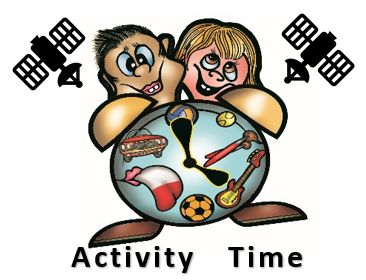
Objectives of the service
The objective of the activity is to increase civil engagement by providing non-governmental organizations and private companies with a professional system to manage their events and reach effectively the target audience and by providing persons looking for additional activities overview information on the available offer in their surroundings.
Thanks to the AT system which is able to locate the user via smartphone, prosocial organizations can reach a larger group of recipients: by focusing in local offers about the classes, the users cannot miss any interesting events in their area.
Indirectly, thanks to the possibility of evaluating individual classes and leading users through the system, users can be able to choose the best quality offers, which should result in the improvement of poor education. On the basis of preferences (type of sport, activity, user ratings), users can choose a class where it is worth attending and a location quickly to reach. Supported by the AT solution, they will be able to manage easily their mobility after work.
Users and their needs
The market connected with extra lessons is increasing. There are many language and sport activities for children. What is more, there is also a huge range of activities for adults and elderly. Every company which offers such lessons has its own website where potential customers can find necessary information. The aim of this project is to create a system that collect all the information about extra lessons and activities, involving also advertisements. It can allow many companies to reach their potential customers. The integration of new solutions based on positioning through smartphone allows to personalize the offer for particular users, gaining information about activities which take place nearby. Activities offered on the market can be divided into two groups: commercial and free (organized by different non-governmental organizations (NGO) such as foundations). The AT solution is supposed to target such institutions and various commercial companies. Non-profit organizations find it difficult to get potential customers. AT is supposed to increase the global access to information about their activities. The functions of the AT solution can enable more and more people to take part in extra activities which can result in higher level of education.
Poland and optionally other European countries
Service/ system concept
The AT system is based on a three-layer architecture, where the following components can be connected together: Layer I - base supply, Layer II - data storage and analysis, Layer III - information sharing.
The main task of the “base supply” layer is to enter data about classes conducted by companies (based on data input interfaces operating in a web browser).
“Data storage and analysis” layer (data warehouse) physically implemented in the form of disk arrays operating in both the SAN (Storage Area Network) and the NAS (Network Attached Storage) file model, and logically as RDBMS (Relational Database Management System) or / and the file system associated with it.
Business logic sub layer: the heart of the AT system is a specialized layer of processing aggregated data. Text data (obtained on the basis of data entry by companies) extended with geolocation and data from user requests data with user location (thanks to GNSS services on mobile devices of end users).
Layer III - information sharing can be prepared with particular emphasis on mobile devices. The user interface can allow to enter a filter for the needed information to learn about the class, including determining the search area.

Space Added Value
The proposed solution is based on the user's location through GNSS system on the mobile device. User location information allows to build new business strategies related to the development of individual services and products. Knowing the users’ locations allows to reduce the information noise related to the offer and advertising displayed arbitrarily and accidentally. The use of a known location allows to create a situation where the organization offering classes can hit the target group with its offer, and the end user can get information regarding only the area and thematic fields of interest.
Current Status
The kickstart study, carried out from December 2018 until July 2019, was based on the following activities:
- survey/interview conducted with people / organisations conducting extra classes,
- survey conducted with participants of additional/extra classes,
- market analysis related to extra activities
- technical analysis related to the construction of the AT system.
A business plan was developed to analyze costs, methods and time required to develop the final AT system.
Regarding the technical feasibility, the kickstart study has confirmed the availability of technical solutions (IT) that will ensure the functionality required by system recipients. At the same time, the human resources of our company proved to be sufficient for the implementation of the project.
Regarding the commercial viability, the market research has confirmed the existence of needs from individual customers and service companies (offering extra classes) to create a system and service supporting search and communication.
It is intended to continue the work and to implement a follow-on Demonstration Project in the framework of ESA’s ‘Integrated Application Promotion’ programme.


